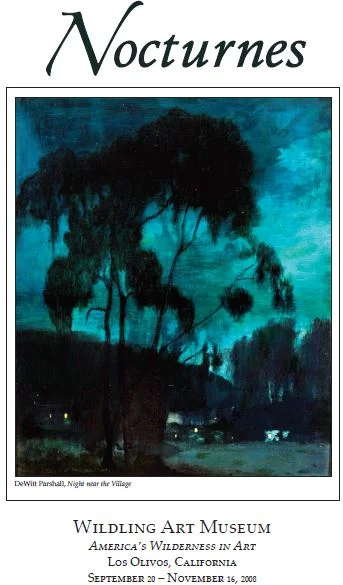Many late nineteenth-century artists used nocturnal paintings to represent spiritual transcendence that was a departure from the naturalism and literalism of the Hudson River School painters who relied on sharp details and recognizable locations. In the wake of Charles Darwin’s momentous discoveries, nocturne painter’s ambiguous, unsettling scenes became spiritual substitutes for traditional religious doctrine. In 1899, at an exhibition in New York, California artist Charles Rollo Peters (1862-1928) exhibited a series of sixteen moonlit views of California missions. His nocturnal paintings had an enormous impact on East Coast painters such as Frederic Remington (1861-1909), best known for his images of the American West and young emerging talent such as DeWitt Parshall (1864-1956) who would ultimately reside in Santa Barbara. Peters’ Monterey ranch became an artist’s hub particularly for those who sought to learn how to master the technical and aesthetic qualities of painting darkness. His lone, ramshackle Spanish adobes became his signature motif and best express the principles of tonal painting that he had learned in Paris. Painting nocturnes is one adventurous way for an artist to experience the realm of the unknown: either something never seen before, or a familiar subject seen in an unfamiliar way.
Read More
